
 Image: Alex Estevez / Foundry
Image: Alex Estevez / Foundry
Intel’s new desktop CPUs are radically different than the Intel CPUs you’re used to.
Today marks the launch of Arrow Lake, the company’s latest architecture for desktop processors, formally sold as the Core Ultra 200S Series. According to Intel’s claims, this batch of Core chips is faster and far more power efficient than last-gen Raptor Lake CPUs, while still beating out the competition.
However, Arrow Lake isn’t notable just for what it does, but also for what it is. As the first set of desktop x86 processors shipped but not fabricated by Intel, TSMC’s involvement in their production is but one new standout aspect. Intel has reworked its chip design, too—and the overhaul comes with some quirks, as we discovered during our testing.
For a deeper dive into productivity benchmarks, check out Gordon’s video review of the Core Ultra 9 285K below.
Here, let’s dig into the top ten things you should know about Intel’s Core Ultra 200S CPUs, after extensive testing of the flagship Core Ultra 9 285K.
New names for a new era

Alex Estevez / Foundry
Last year, Intel retooled its naming system for Core processors, bidding farewell to the “i” designator before 3, 5, 7, and 9, and dropping the reference to the generation. It also squeezed in the word “Ultra” for CPUs containing Arc graphics and a Neural Processing Unit (NPU) for AI-based tasks, as well as reset the numbering system to start in the hundreds.
This change first rolled out to laptops with Meteor Lake CPUs in late 2023. Arrow Lake’s release is the first time we’re seeing the new names on desktop—a big shift after a decade-plus of the old style of names. Intel also opted to begin Arrow Lake’s numbering in the 200 range, despite being the first on desktop—likely so that laptop and desktop architectures from the same year match. (Lunar Lake, which just began shipping in laptops in September 2024, labels its processors with numbers in the 200 range as well.)

Intel
These are the five CPUs in the new Core Ultra 200S series, which includes two variants without integrated graphics, as denoted by the “F” designator (that convention is still the same as before):
Intel Core Ultra 9 285K: 24 cores (8 P-cores, 16 E-cores, 5.7GHz max); 4 GPU cores, 13 TOPS NPU, $589Intel Core Ultra 9 265K: 20 cores (8 P-cores, 12 E-cores, 5.5GHz max); 4 GPU cores, 13 TOPS NPU, $394Intel Core Ultra 9 265KF: 20 cores (8 P-cores, 12 E-cores, 5.5GHz max); 0 GPU cores, 13 TOPS NPU, $379Intel Core Ultra 9 245K: 14 cores (6 P-cores, 8 E-cores, 5.2GHz max); 4 GPU cores, 13 TOPS NPU, $309Intel Core Ultra 9 245KF: 14 cores (6 P-cores, 8 E-cores, 5.2GHz max); 0 GPU cores, 13 TOPS NPU, $294
Hyperthreading is dead (again)
Intel introduced the masses to hyperthreading, its technology that allows a CPU core to run two threads (that is, set of instructions) simultaneously, rather than the default of just one per physical core. But in more recent years, the company has flirted with killing it off. For Arrow Lake, the feature’s gone overboard once again.
As Intel explained recently, it dropped hyperthreading as part of efforts to improve power and space efficiency in Arrow Lake—that is, how much power a chip uses, and what can be fit into each processor’s package.
So the core counts you see for Core Ultra 200S processors are what you get—no additional threads. That said, the number of Lion Cove performance cores (aka P-cores), and Skymont efficiency cores (aka E-cores) packed into Arrow Lake aren’t stingy. The top Core Ultra 9 285K chip still boasts 24 cores overall, with 8 P-cores and 16 E-cores.
Performance gains for content creators
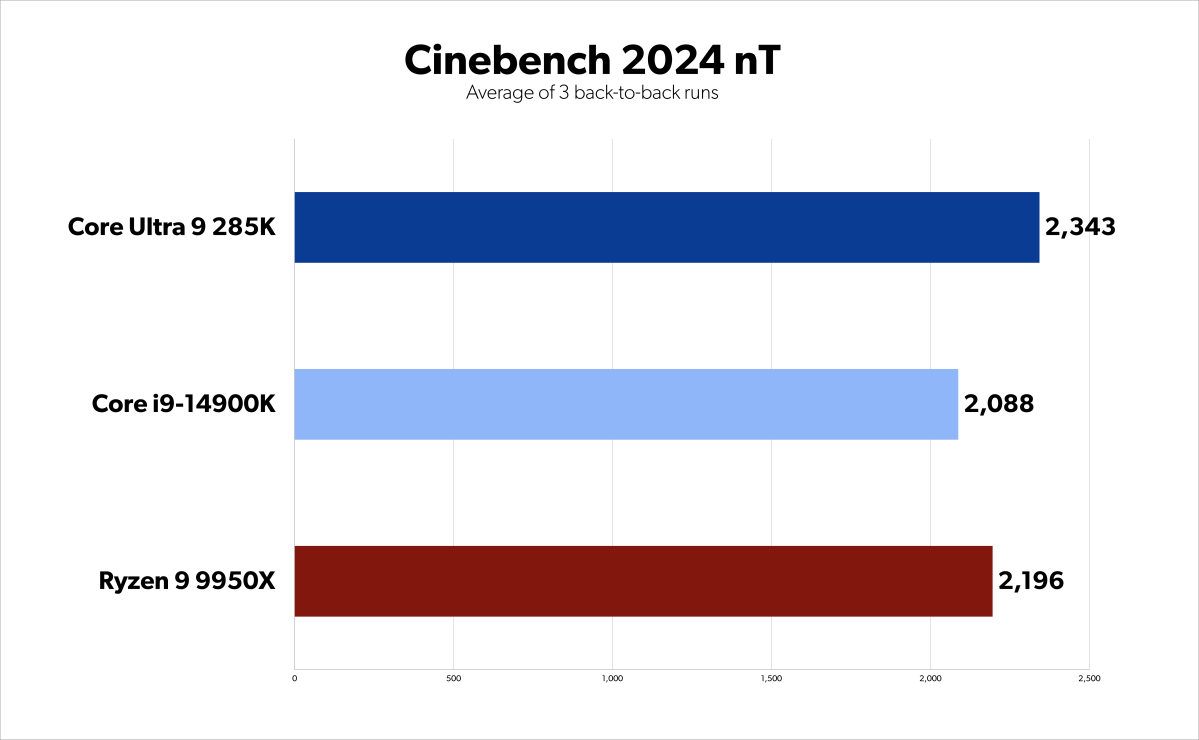
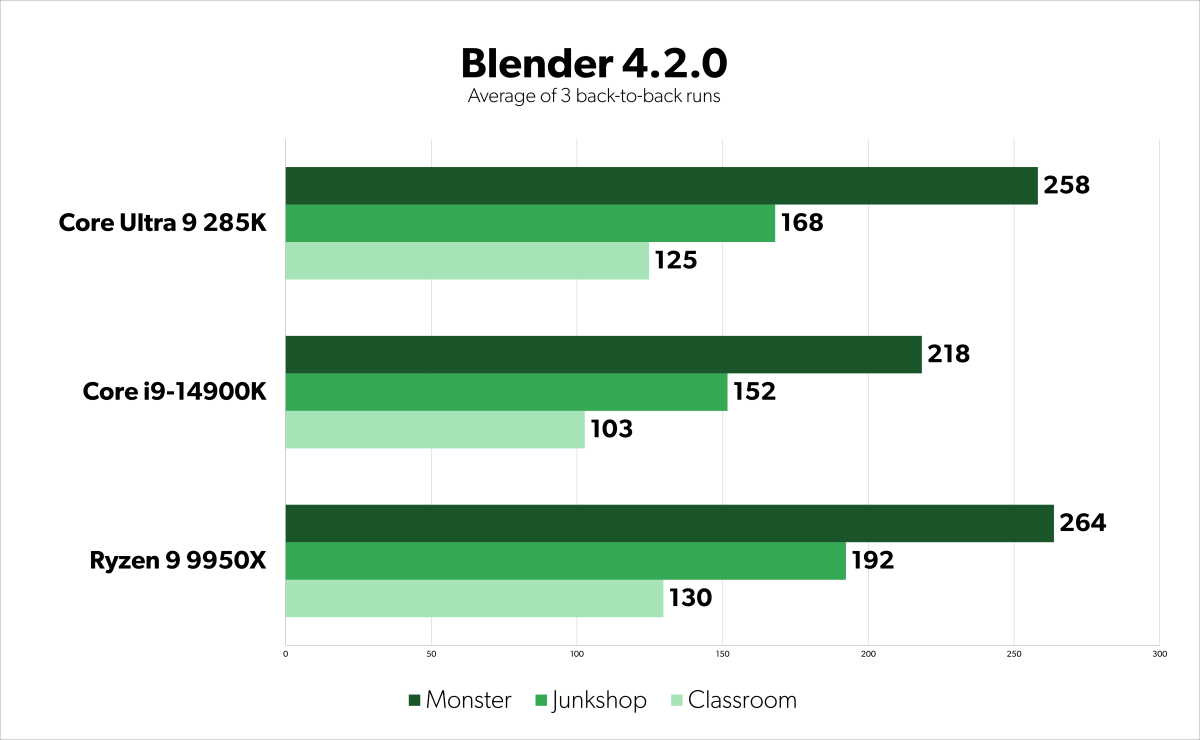
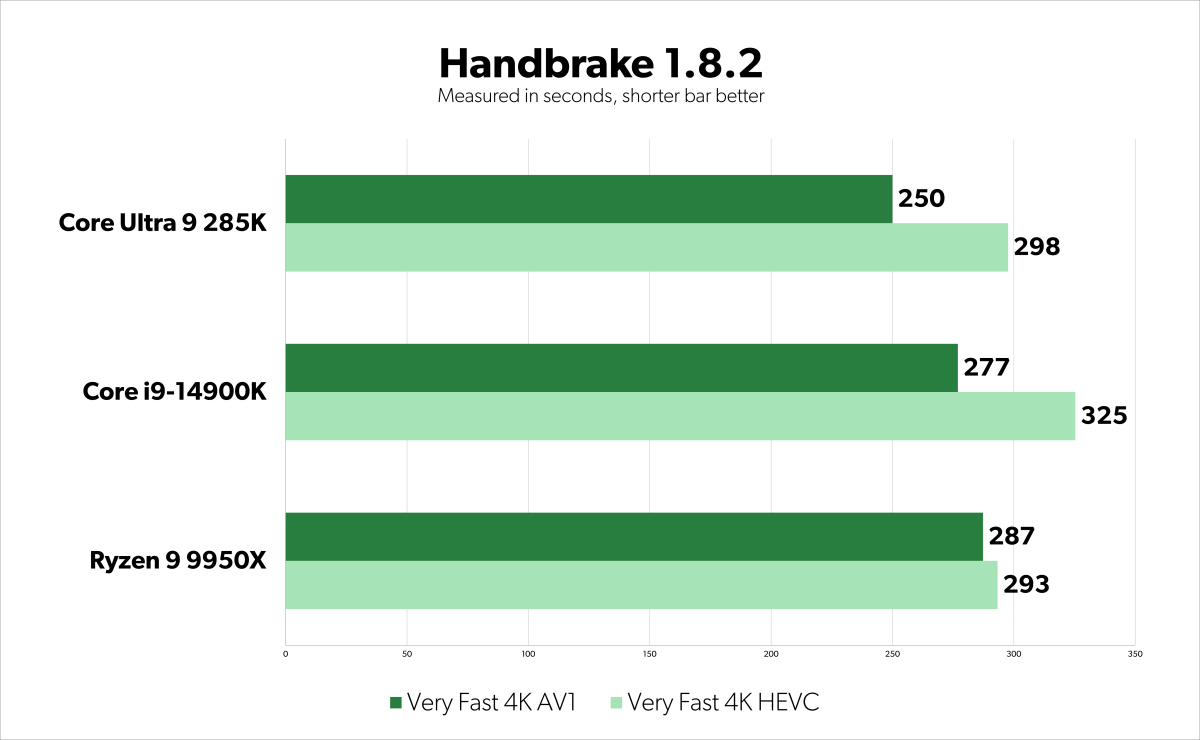
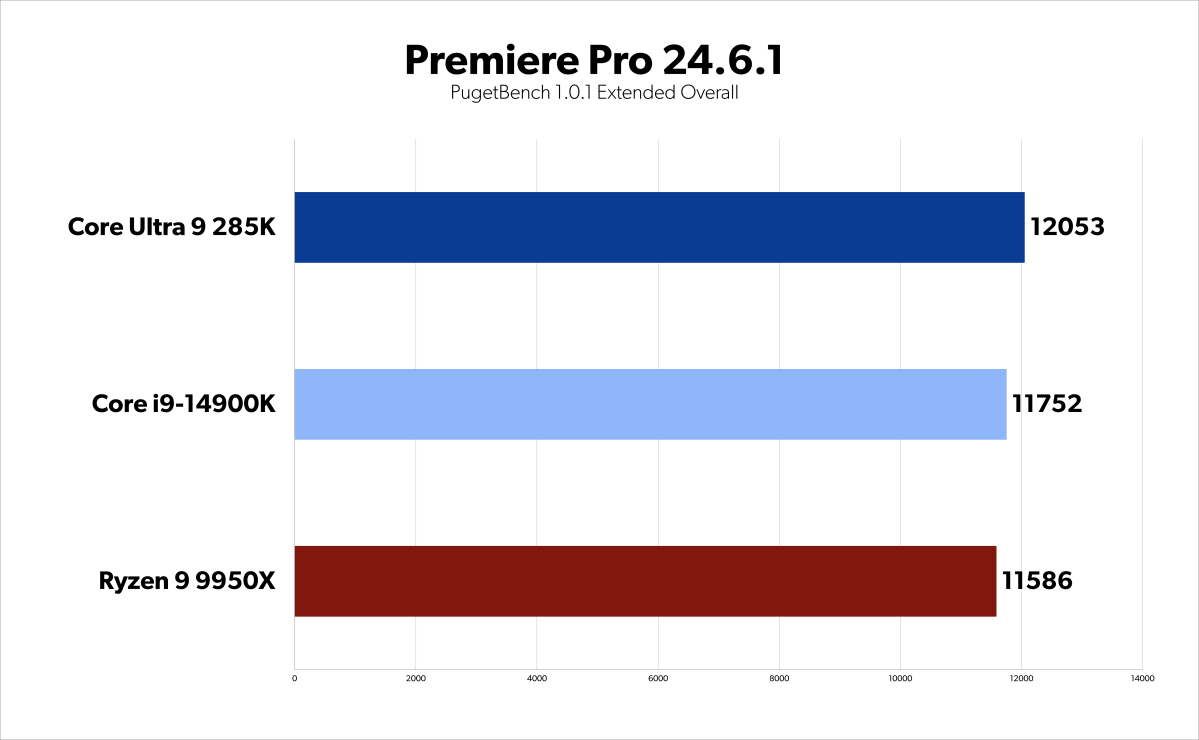
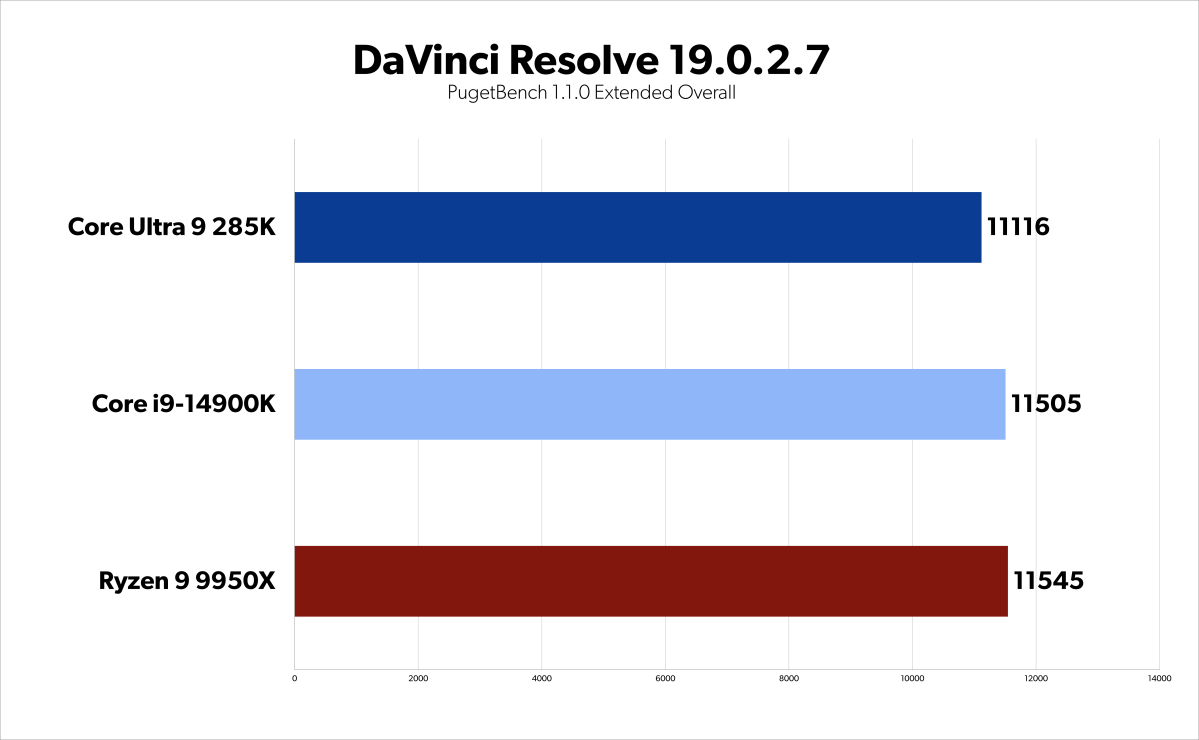
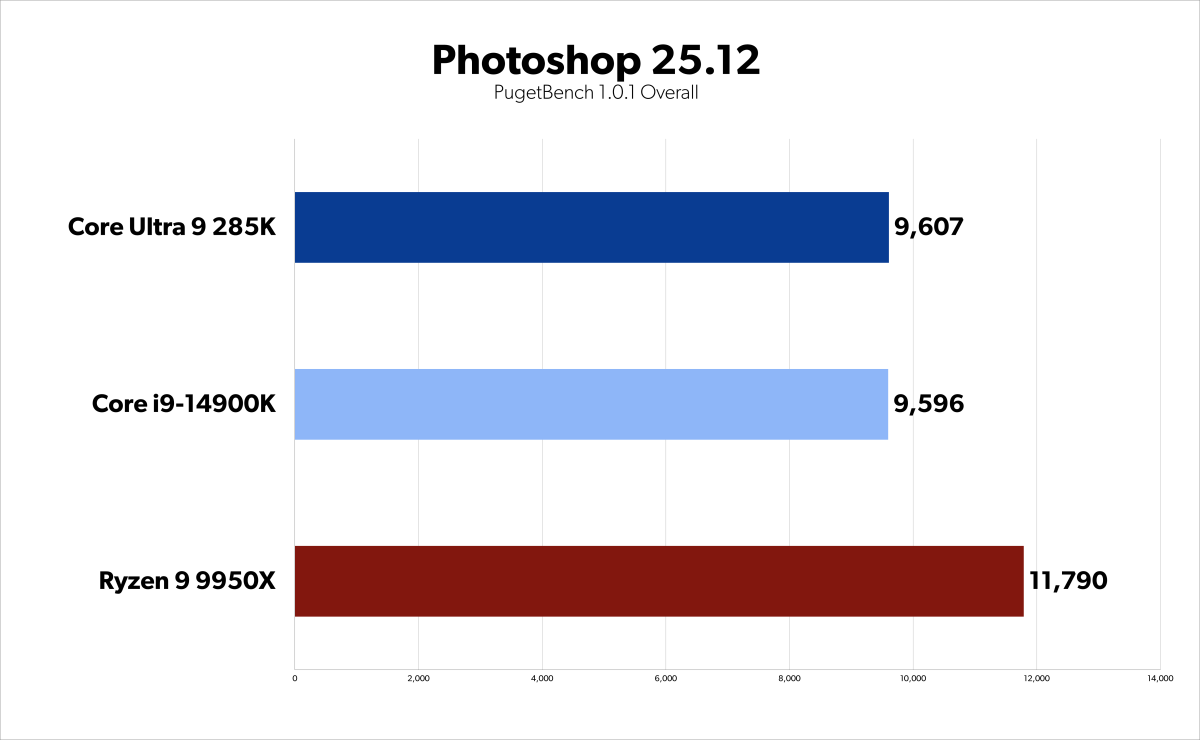
Arrow Lake’s performance will be a touchy subject among chip enthusiasts, who’ve become accustomed to huge gains over the last couple of years. But that was possible due to high power ceilings—recent flagship processors essentially came overclocked as the default. In contrast, a key attribute of the Core Ultra 200S lineup is power efficiency, which Intel emphasizes as a selling point.
With this change, Arrow Lake provides creatives improved performance, but the gains aren’t spectacular enough to compel most Core i9-14900K owners to upgrade just yet.
Across our rendering and encoding benchmarks, the Core Ultra 9 285K consistently pulled ahead of last generation’s 14900K flagship, with improvements ranging between 2 to 21 percent depending on the task. It also mostly edged ahead of the Ryzen 9 9950X. The one exception: It trailed slightly behind both older CPUs in DaVinci Resolve.
But gaming is less of a win
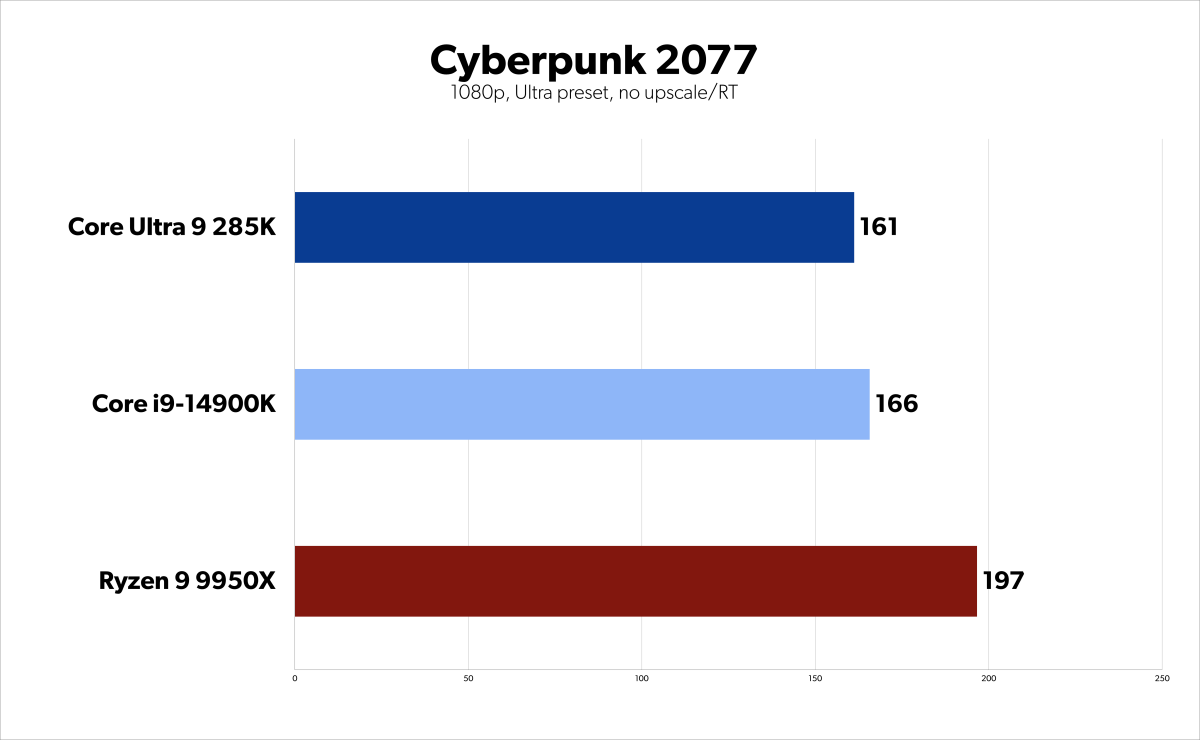
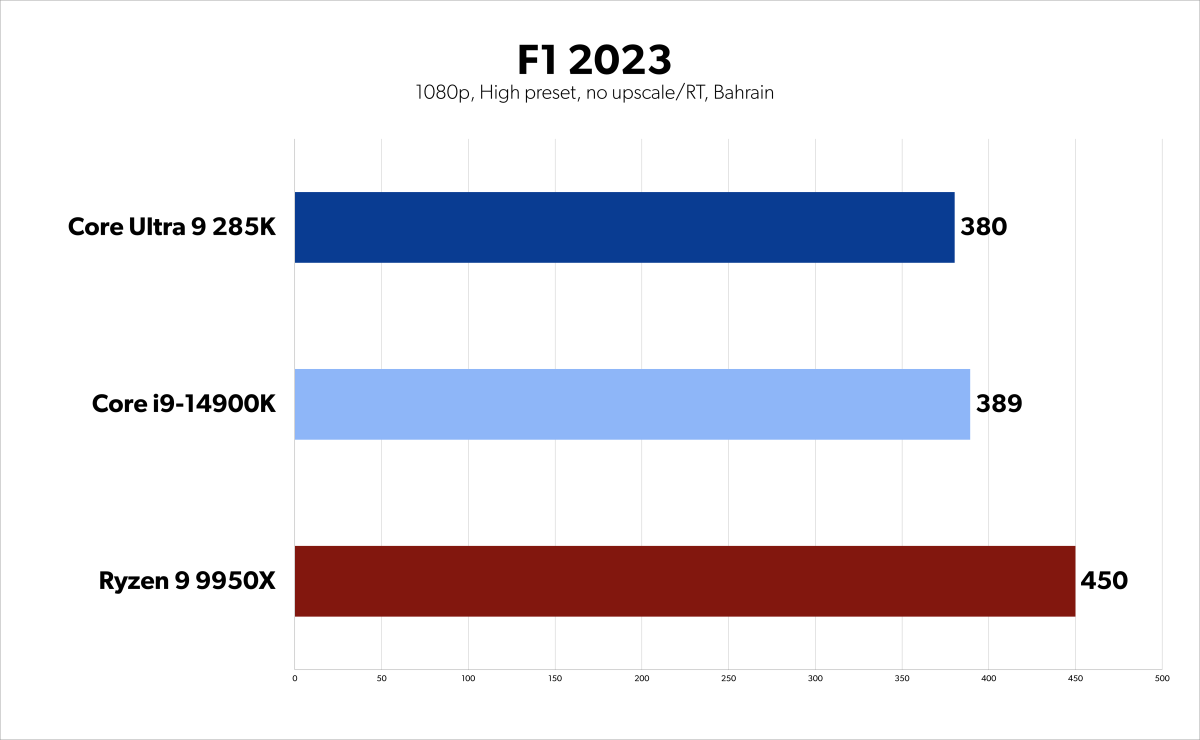
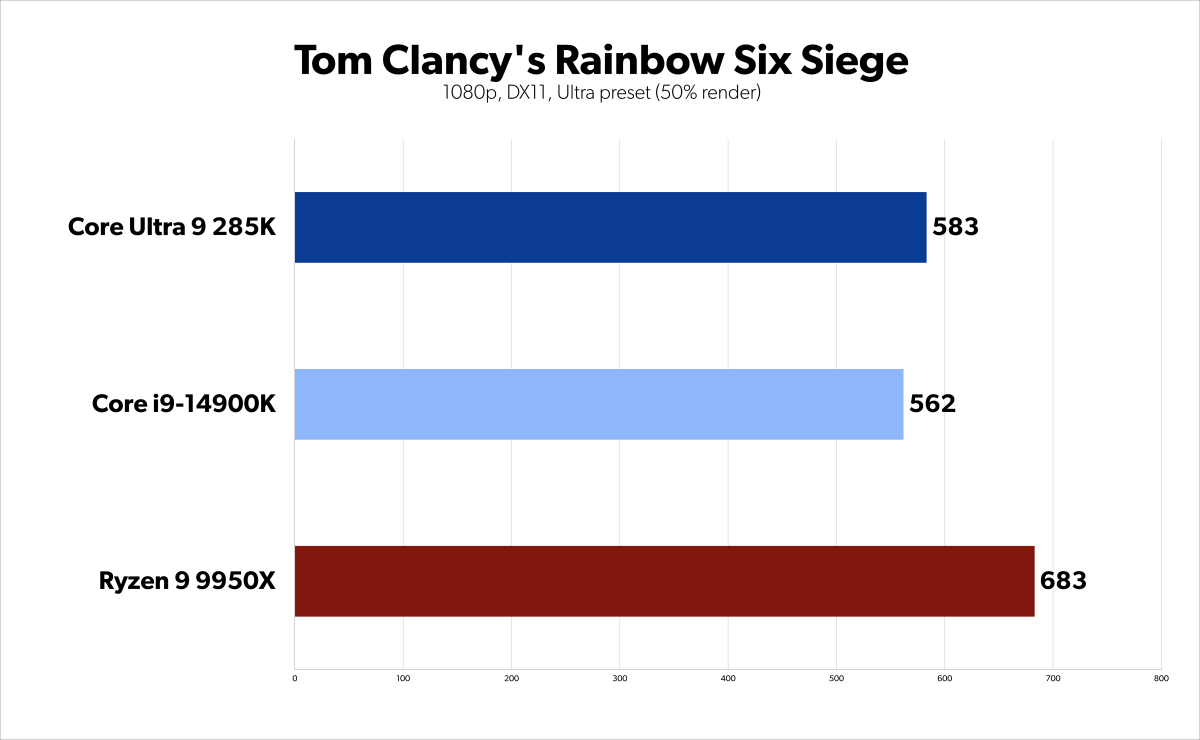
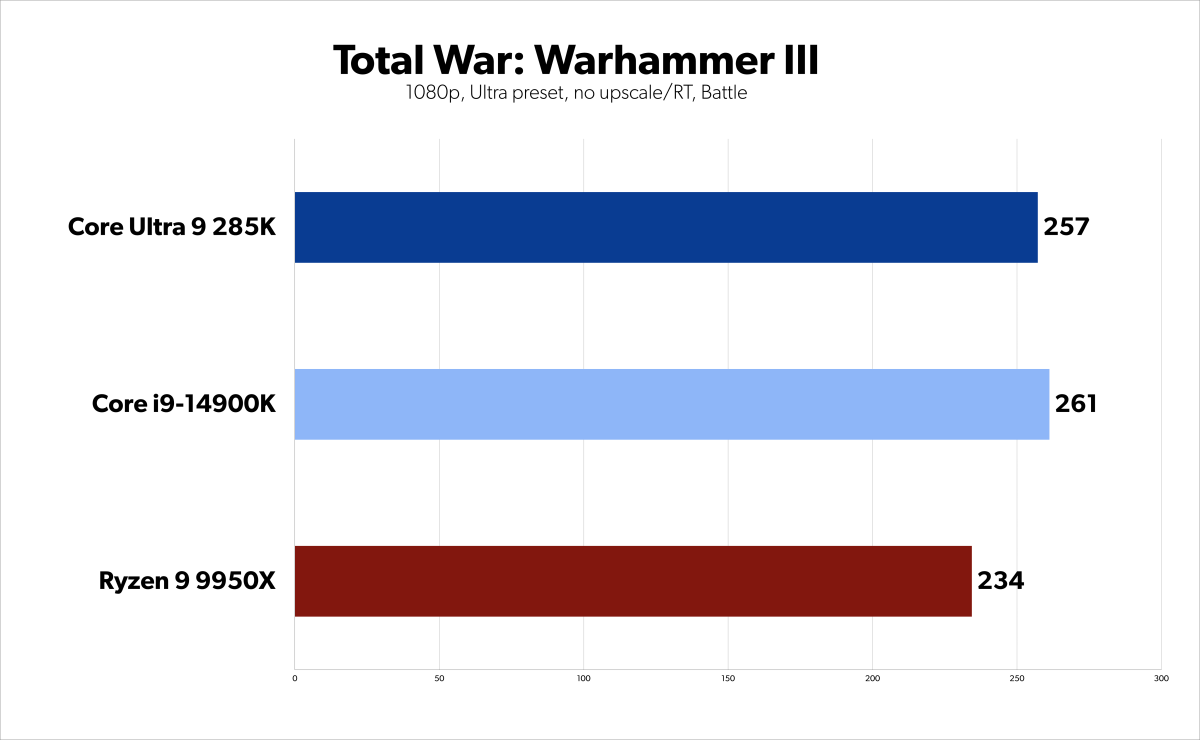
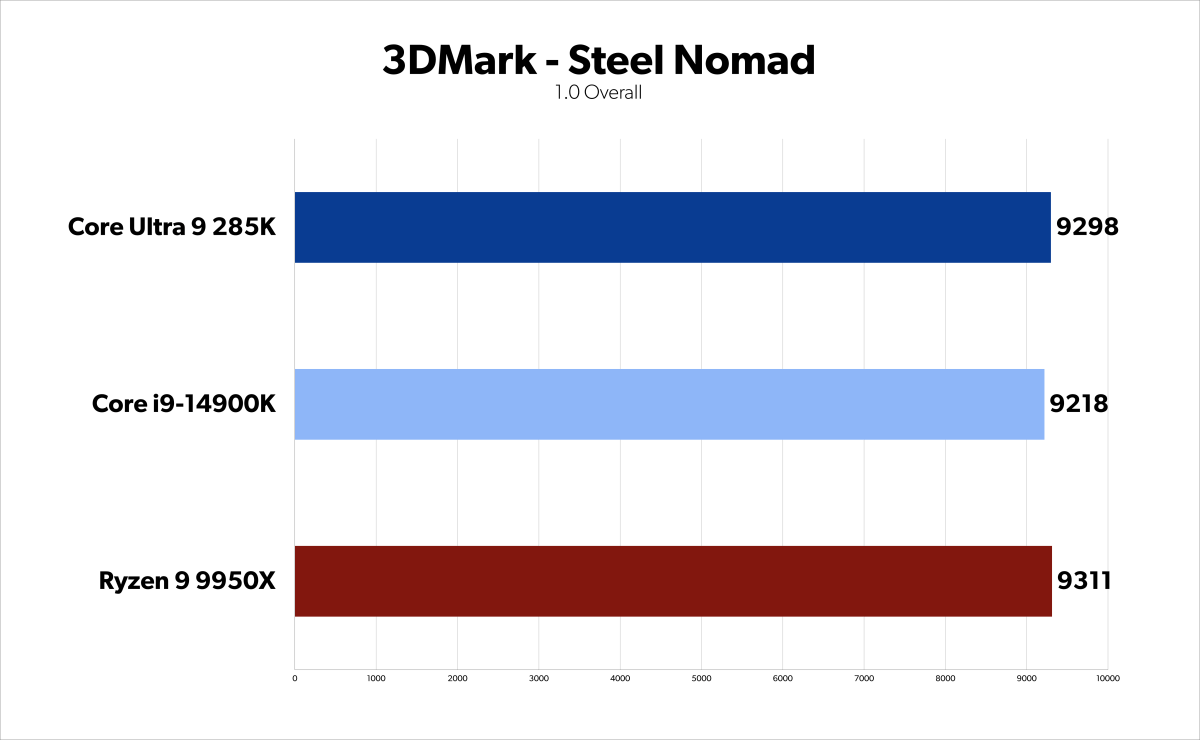
Gamers love to see new CPUs crush the existing competition—and for those in that crowd, the Core Ultra 9 285K may seem disappointing. It’s a chip that trails behind the 14900K and 9950X in some games, holds about equal with them in others, and edges them out in yet others.
In our small selection of gaming benchmarks, the 285K generally held even with the 14900K, but often trailed by a double-digit margin behind AMD’s Ryzen 9 9950X. In Cyberpunk 2077, the 9950X kept a cushy 18 percent lead over the 285K, with similar performance in F1 2023 and Rainbow Six Siege. The 285K only held its own in 3DMark’s Steel Nomad, a synthetic gaming benchmark that simulates a more system-intensive game at 4K resolution.
Even when paired with faster, more performant CU-DIMM memory (instead of DDR5), gaming performance doesn’t dramatically improve—in F1 2023, we saw a rise to 410 frames per second, or about a 7 percent increase. That narrows the gap between the 285K and 9950X, but the latter still comes out on top.
By no means is the 285K a bad chip for gaming—but it won’t blow anyone’s socks off. So while Intel has been open about Arrow Lake’s gaming performance, the internet pitchforks will likely be out in force.
Power efficiency is improved, but…
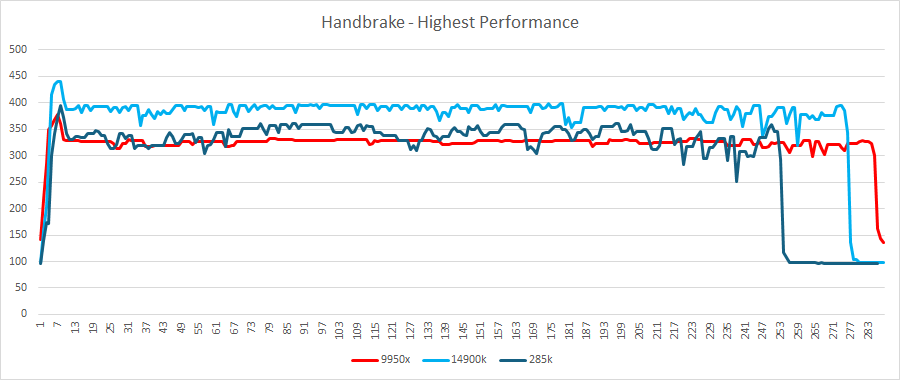
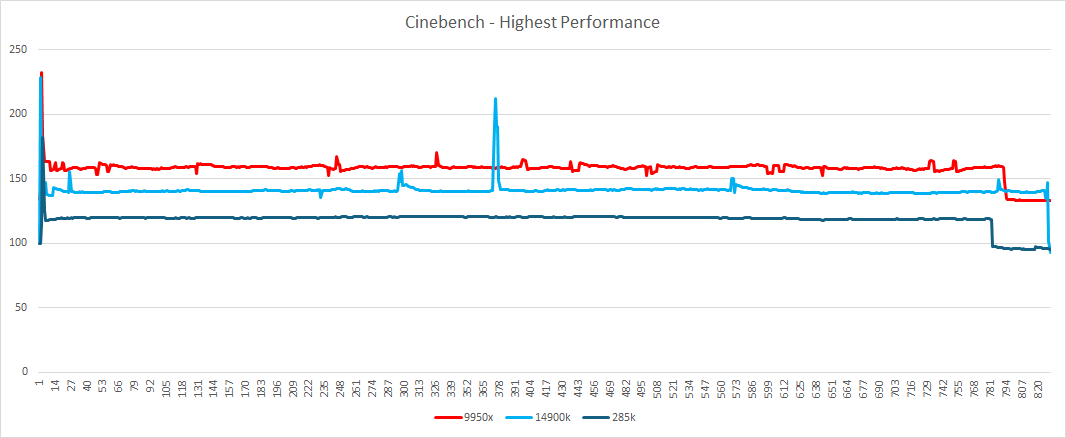

As for the reason behind Arrow Lake’s smaller performance gains—Intel claims its new chips match 14th-gen Raptor Lake-R’s performance at half the power, but you may not see quite such a dramatic improvement.
Compared to the 14900K, our tests showed a 17 percent decrease in power consumption during our Handbrake AV1 benchmark (a difference of 65 watts). Similarly, during Cinebench 2024’s single-core benchmark, energy use dropped by about 16 percent (a difference of 22 watts). At idle, the 285K’s power draw actually increased slightly, nudging up about 3 percent (about 2.5 watts). These three benchmarks cover the general spectrum of usual PC behavior.
The 285K fares better against AMD’s best, with a 4 percent decrease in power consumption in Handbrake, an almost 25 percent decrease in Cinebench 2024, and a roughly 28 percent decrease at idle compared to the 9950X.
Overall, Intel’s improvements give it an edge if you’re worried about heat or your power bill. But the story doesn’t end there. Turns out, when you dig into power draw, these new chips reveal an unexpected peculiarity.
…Windows optimizations may be a work in progress
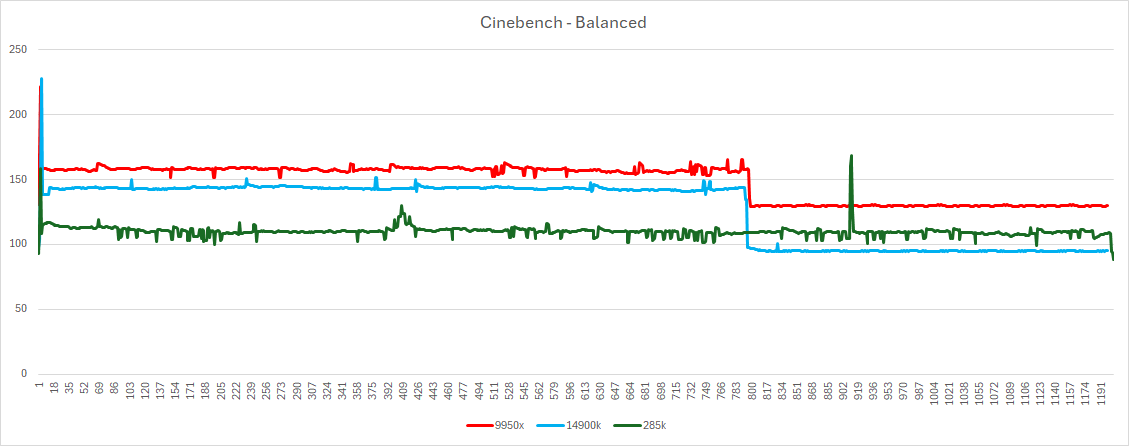
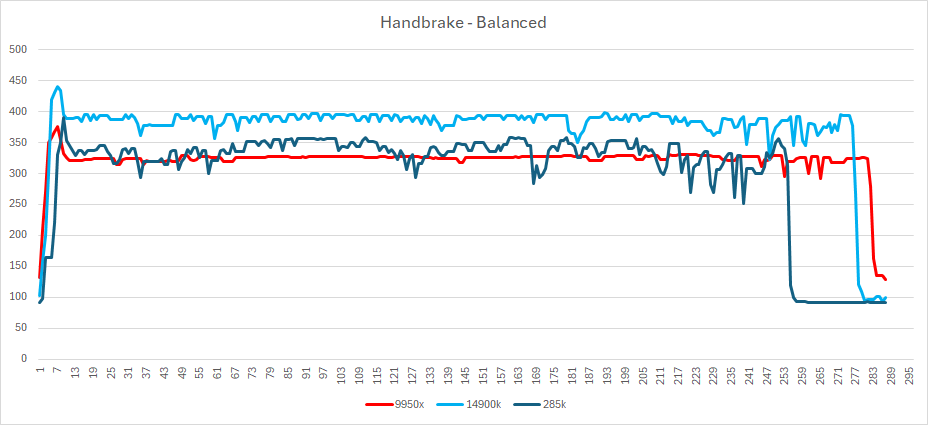
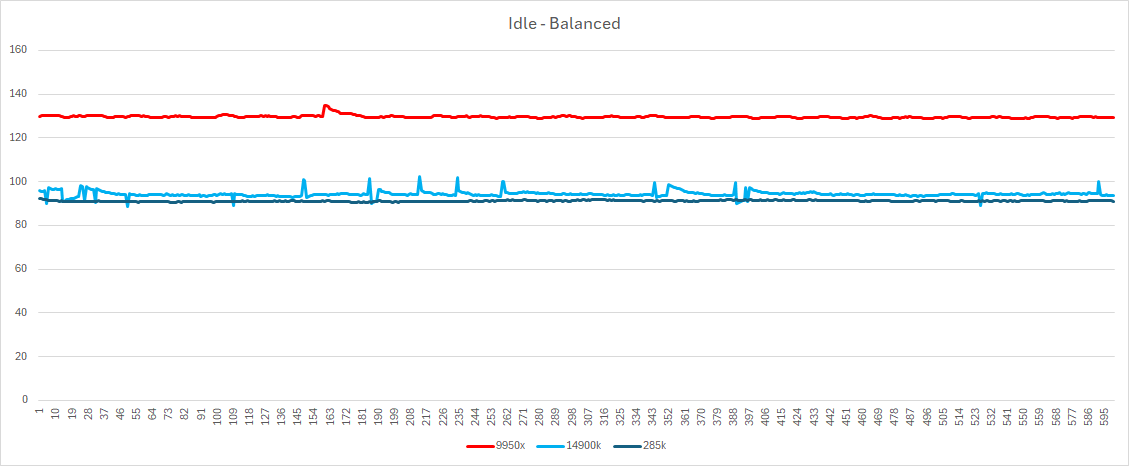
Desktop users don’t often pay much mind to Windows power settings—they’re less relevant when you’re plugged into a wall all the time. At least, that’s the case normally.
However, being a curious bunch, we checked the 285K’s power consumption on different Windows 11 power plans. And oddly, the 285K’s performance dropped on the Balanced and Power Saver plans.
In our Cinebench 2024 single-core test, the 285K slowed down notably while completing its task, stretching out to 30 minutes on the Balanced plan. On the High Performance plan, the 285K kept closer to a 10 minute run (a more typical result for flagship desktop chips). Highlighting this contrast, the 14900K and 9950X finished with their usual times—meaning we could start those chips’ benchmarks later than the 285K (15 minutes into the 285K’s run) and still see them complete the task faster.
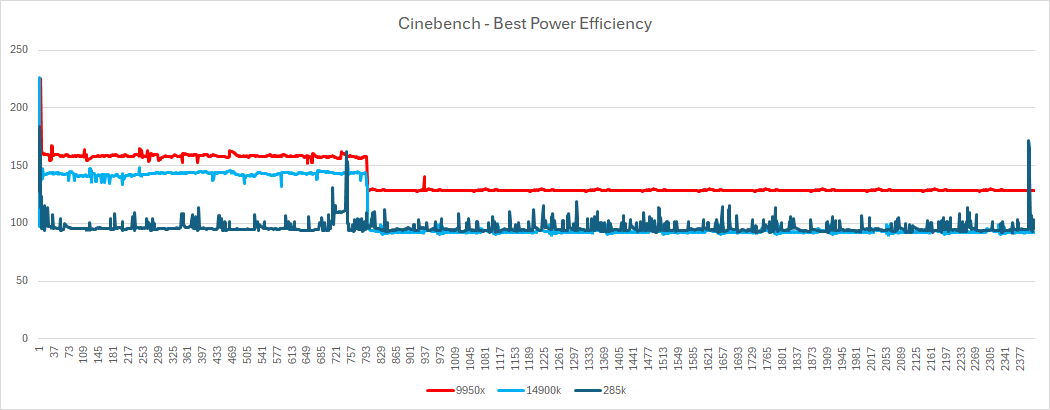
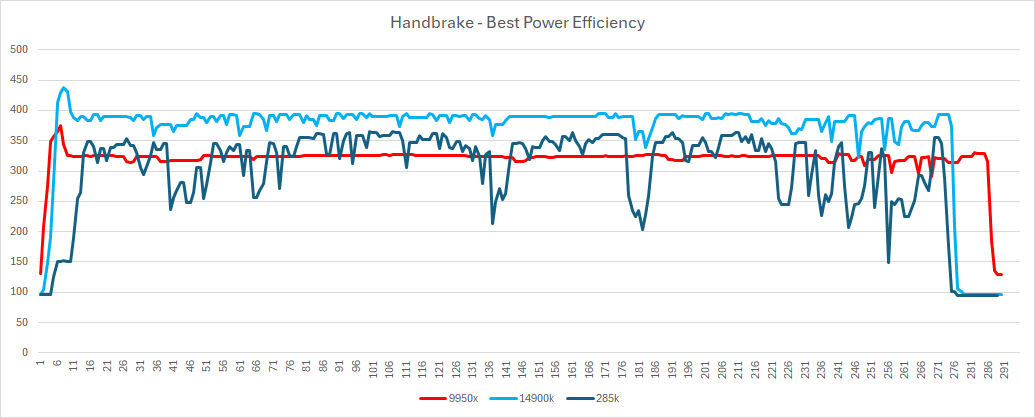
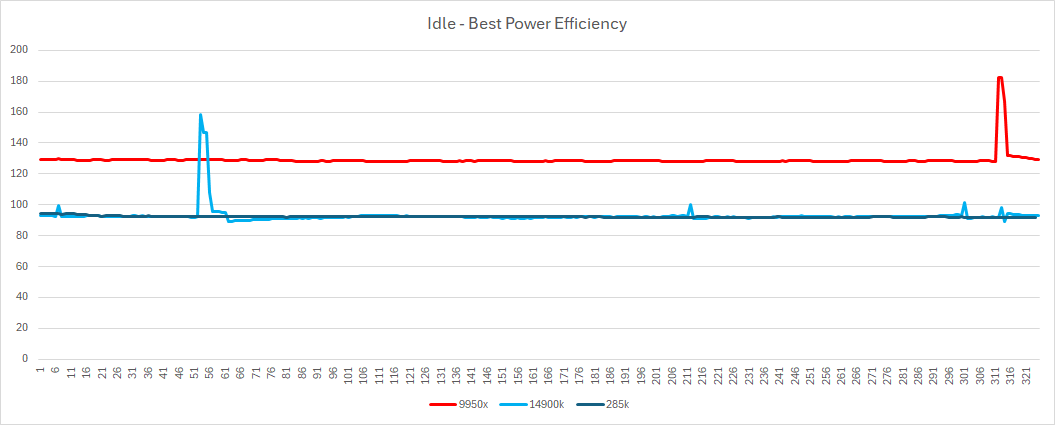
Additionally, the resulting score showed a 55 percent decrease in performance compared to the 14900K and 9950X on the same Balanced power plan. The difference was even higher on the Power Saver plan, with a 67 percent drop.
Meanwhile, on High Performance settings, the 285K actually outperformed its predecessor by about 5 percent, and the 9950X by about 2 percent. This outcome is all the more puzzling, given that our power draw measurements showed little energy savings across the various power plans.
Does this mean Intel’s new chip could be nerfed by your power settings? For the moment, likely yes, especially since the Balanced power plan is the Windows default. Time will tell if this behavior can and will be fixed via better Windows optimization.
Intel revamped its processor design
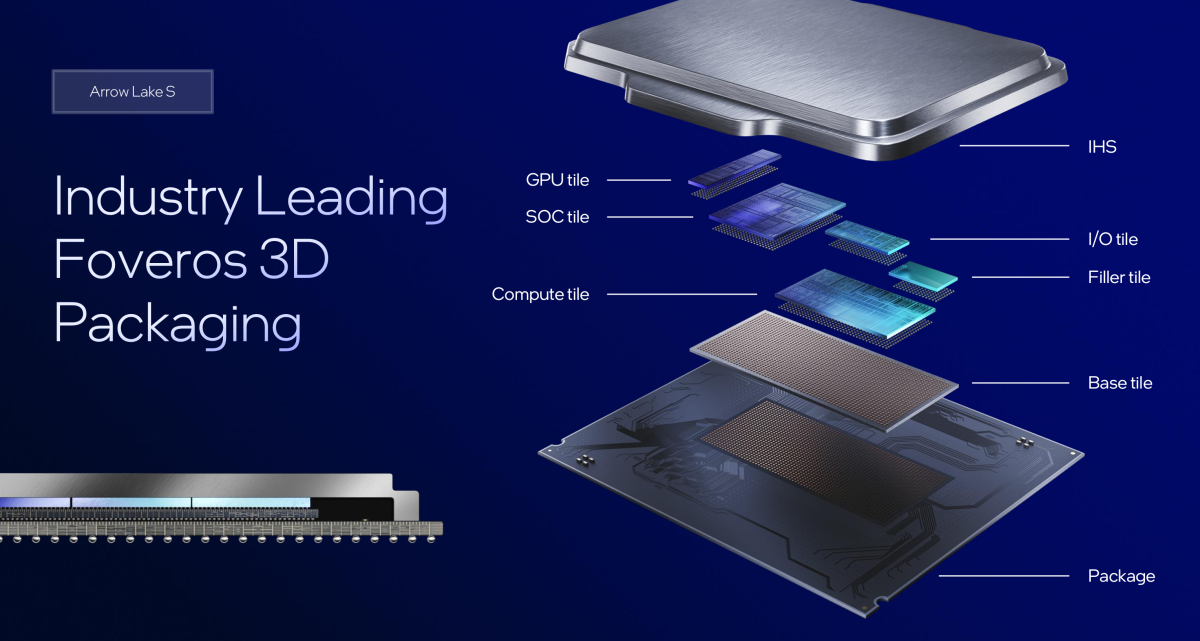
Intel
Growing pains with a new chip design aren’t too surprising—Arrow Lake is considerably different compared to 14th-gen Raptor Lake-R.
Until now, Intel released monolithic processors for desktop; everything related to the CPU existed on a single die. But starting with Arrow Lake, Intel has switched to a chiplet design, a move that rival AMD made years ago.
Intel calls Arrow Lake a “disaggregated” processor, in which separate chiplets (“tiles”) for different functions are linked together as a single package. If you pull off the lid of an Arrow Lake processor, you’ll find compute, GPU, SOC, and I/O tiles, along with a “filler” and “base” tile for stability. Intel’s Foveros technology connects them all together. Each of these chiplets are fabricated (produced) on different processes—you can read more details about them in our initial overview of Arrow Lake.
For chip nerds, this change in approach represents a huge shift for Intel, which had previously championed a single die as better performing. For most home users, however, what matters more is how Intel had to juggle the layout of the package.
You’ll need a new motherboard

Intel
Arrow Lake requires a new socket—LGA 1851—and accordingly, that means it won’t be compatible with existing LGA 1700 boards.
The first chipset to be announced is the Z890, which supports up to 192GB of DDR5-6400 memory (up to 48GB per DIMM). You can use more common SO-DIMMs, but the newer CU-DIMM memory modules work as well. Intel says that if you enable XMP for faster RAM speeds, DDR5-8000 will be the ideal.
For connectivity, Intel’s 800 series chipsets offer up to 24 PCI-e 4.0 lanes, as well as 10 USB 3.2, 14 USB 2.0, and 8 SATA 3.0 connections. Combined with an Arrow Lake CPU, you’ll get up to 48 PCIe lanes, with 20 of them PCIe 5.0.
Thunderbolt 4 and Thunderbolt 5 integration are also features, as are technologies like Thunderbolt Share (which lets you share screens, peripherals, storage, and files with another PC), Intel Killer Wi-Fi 7, Bluetooth 5.4, and 2.5Gbps ethernet (depending on configuration).
DDR5 RAM & existing coolers still work

IDG
While you can pair Arrow Lake with CU-DIMM memory, it doesn’t mean you must. DDR5 RAM will still work with a Core Ultra 200S processor, and as we’ve seen above, you’re not losing that much of a performance boost.
In fact, with general availability for CU-DIMM memory not slated to heat up until early next year, if you buy into Arrow Lake now, your option really will be only DDR5 memory.
As for coolers—if you already have a cooler compatible with 13th or 14th generation processors, they should still work with Arrow Lake. However, Intel says you’ll likely new mounting hardware to achieve the correct pressure for optimal cooling.
No upgrades to AI capabilities on desktop
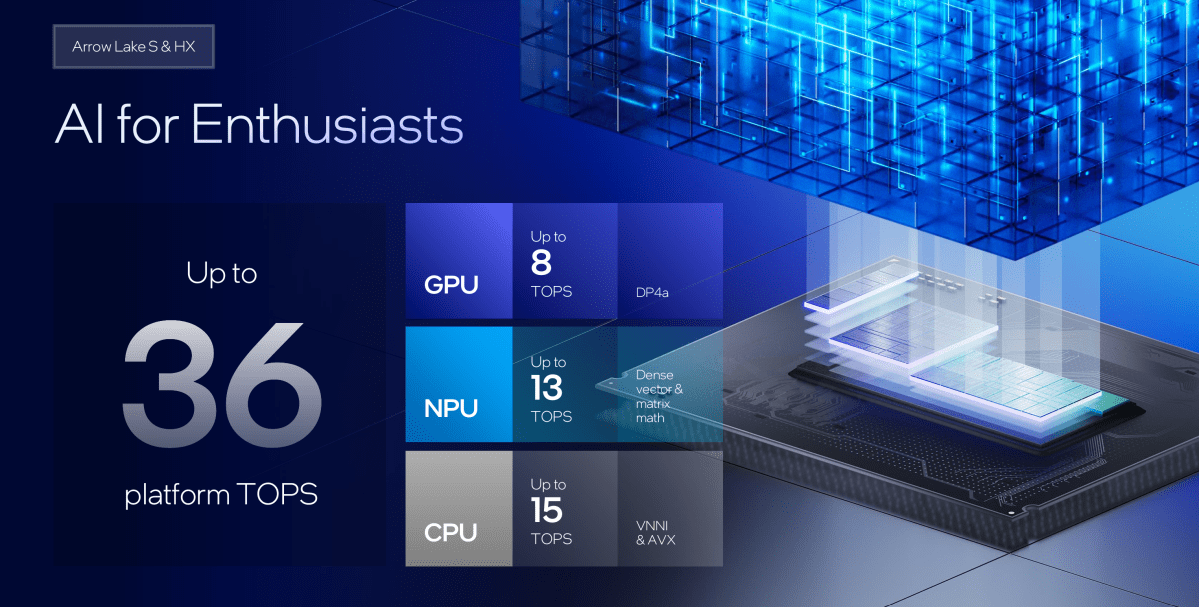
Intel
If you were hoping that the launch of Arrow Lake meant desktop access to generative AI and the divisive Recall feature in Windows 11, prepare yourself for disappointment. These new processors incorporate an older NPU into the package, which only provides 13 TOPS of computational performance, well below the minimum of 40 TOPS Microsoft requires to unlock Windows 11’s Copilot+ AI features.
Why? Decisions were made to keep gamers happy—as they’re one of the primary groups of buyers for desktop chips. You can read more about Intel’s approach in our rundown of Arrow Lake’s AI capabilities, but know that systems with these chips will still likely be marketed as AI PCs.


